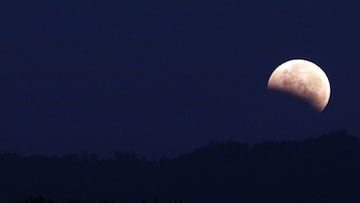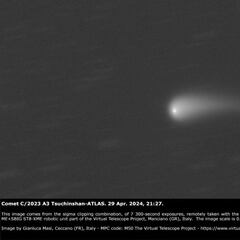Lunar eclipse of the Full Harvest Moon: when and where is the best time to watch?
Tuesday evening, stargazers are in for a treat as they’ll have a chance to watch a “reddish bite” taken out of the Moon as it passes through Earth’s shadow.

The night sky in September will be graced not only with the second of four supermoons but also a partial lunar eclipse. The moon will be at its fullest on the night of September 17 when the Sun, Earth and Moon are in perfect alignment and because of where our natural satellite is in its orbit, it will pass through our planet’s shadow.
The spectacle will be visible across the whole of the Lower 48. However, unfortunately for Alaska and Hawaii, it will be over before the Moon is visible in the sky. Weather permitting, here’s when you’ll want to be looking skyward to catch the astronomical phenomenon.
Lunar eclipse of the Full Harvest Moon: when and where is the best time to watch?
The Moon will move into the Earth’s shadow beginning the penumbral phase around 8:41 pm EDT or 5:41 pm PDT. About an hour and a half later “people should start noticing a ‘reddish bite’ being taken out of the top part of the Moon,” according to Bill Cooke, the head of NASA’s Meteoroid Environment Office.
Specifically, at roughly 10:12 pm EDT, or 7:12 pm PDT, the a portion of the Moon will enter into the umbra and the “reddish bite” will grow until it reaches its maximum 32 minutes later. The partial phase will be over at 11:15 pm EDT, or 8:15 pm PDT and the about an hour and a half later the eclipse will finish.
You can check when exactly each phase will take place where you are at Time and Date.
Fall officially begins later this month, and the sky has something SUPER in store to welcome it. On Sept. 17, you have the chance to see a full supermoon AND a partial lunar eclipse!
— NASA Marshall (@NASA_Marshall) September 15, 2024
Learn more about it in our #WatchTheSkies blog >> https://t.co/lUJWXHZBXH pic.twitter.com/KbkWBv8YLU
Why is it called the Harvest Moon and what makes it a supermoon?
The full moon in September or early October is often referred to as the Harvest Moon because that is the typical time when crops are harvested in the Northern Hemisphere. Farmers in the past could use the light from the full moon to work into the night.
The term supermoon refers to when the moon is full at the same time as its closest approach to Earth in its elliptical orbit, or perigee. A full moon is considered a supermoon, not an official astronomical term, when it comes within 90 percent of perigee. They always appear consecutively three or four times a year.
Related stories
Catching sight of the event as it comes into view will make it seem even bigger than it really is thanks to the ‘big moon illusion’. To know exactly where it will appear on the horizon there is an online application MoonCalc, which will come in useful if you want to take a picture.
How to take a picture of the Super Blue Moon?
If you are looking to catch the perfect photo of the supermoon there are some tools that can help you. For your smartphone there is a useful app, PhotoPills, available for iOS and Android. So that you can make the most of using the app PetaPixel gives a walk through of the app’s features.



Complete your personal details to comment